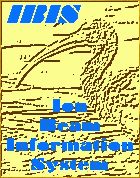 IBIS
Document Library
IBIS
Document Library  IBIS
Document Library
IBIS
Document Library
by E. Szilágyi
One of the most important parameters in depth profiling via ion beam analysis (IBA) is the depth resolution. A relatively fast and accurate algorithm was developed and implemented in a PC-code called DEPTH. The following energy spread contributions (in FWHM sense) are taken into account for the energy loss methods: - The energy and angular spread of the beam. They are related to the energy stability of the accelerator and to the beam handling system, respectively. - The geometrical spread caused by the finite beam spot size and detector solid angle. - The straggling of incident ions and emitted particles in the target. Here both the nuclear and electronic straggling contributions are treated. The latter can be calculated both with and without Chu's correction. We also take into account the effect of the stopping power change for large energy losses. We assume the straggling contributions to be Gaussian shaped and the paths in and out producing independent effects. - The multiple scattering of incident ions and emitted particles in the target, where only projected distributions play a role. The multiple scattering causes energy spread in two ways: (i) the energy of the ions changes because of the different pathlengths, and (ii) the energy of the emitted particle depends on the reaction angle. The combination of the last two effects is treated as statistically dependent, while the ways in and out are independent. The shape of the resulting energy spread was approximated with Pearson VII distributions of which the Gaussian and the Breit - Wigner distributions are special cases. Applying a special procedure, we are able to treat multielemental samples and large energy losses, too. - The energy resolution of the detecting method. It is taken into account with Gaussian shape. - The absorber foil (if there is any). To get the width of the detected energy spread in the cases with absorber foil, first we calculate the width and shape of the energy distribution just at the exit from the sample, then using the transfer function of the foil we determine by numerical integration the correct detected energy spectrum, and then its FWHM. In the case of resonance methods the contributions from the emitted and detected particles are omitted, instead the width of the resonance is taken into account, for the present with a Breit-Wigner shape. To obtain the total energy distribution from the above mentioned independent contributions (or the energy distribution before the absorber foil), they have to be convolved each with other. This would be, however, a relatively slow procedure. To avoid this, an approximative fast summation method was worked out for Pearson VII distribution. The following effects are not included: plural scattering, extremely small energy losses, non-Gaussian straggling for small depths and sample surface roughness. The DEPTH-code, in the present state, works only for homogeneous multielemental targets and in reflection IBM and CORNELL geometries. The code is really fast. A typical depth resolution vs. depth curve with an absorber foil can be obtained in 30 points in a few tens of seconds on a 33 MHz 486-AT personal computer.
download DEPTH.ZIP